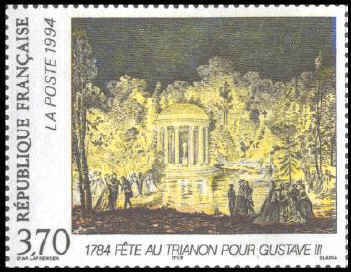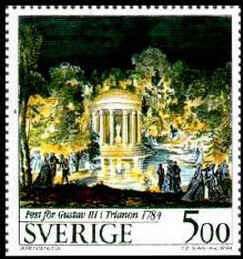^
Born on 30 October 1842: Thomas
Jacques Somerscales, British painter who died on 27 June
1927.
— Nació en Kingston Upon Hull, un puerto ubicado en el Mar del
Norte, a una y otra orilla del estatuario del Humber. Fue el tercer hijo
de una familia de siete hermanos. Su padre fue un hábil marino formado en
la Academia Naval de Hull. Se educó en el Christ Church School hasta los
trece años, siguió estudios de pedagogía en el Tenham College de Gloucesterschire,
no tuvo una formación sistemática en las academias o escuelas de Bellas
Artes, su actividad artística se desarrolló como una afición, motivado por
una familia de larga tradición en el ejercicio de las artes pictóricas.
1862 Se incorpora a la Armada Británica,
siendo destinado a la estación naval del Pacífico, allí enseñó a los guardia
marinas: matemáticas, geografía y dibujo, además de maniobras de arboladura
y velamen.
1864 Llega a Valparaíso, Chile, por primera
vez, el 18 Dec, viaje que repite a comienzos de la primavera de 1867; dos
años más tarde, afectado de fiebre palúdica.
1869 Llega a Valparaíso el día 07 septiembre,
afectado de fiebre pelúdica. Los médicos le recomiendan no regresar a zonas
tropicales, por precaución decide quedarse en Chile, abandonando la filas
de la Armada real. En Valparaíso hace clases en el Artizan English School
y posteriormente en el colegio inglés Mackay, daba lecciones de inglés,
aritmética, geografía, dibujo y caligrafía. Vive en el edificio del colegio
en el cerro Concepción. Se integra al círculo de Bellas Artes de la ciudad,
establece una gran amistad con Manuel Antonio Caro.
1872 Gana medalla de plata en el Salón de
pintura nacional chileno realizado con motivo de la gran exposición de Artes
e Industrias en el Mercado Central de Santiago. Pablo Délano, ex guardiamarina
del Cochrane le encargó la copia del cuadro La captura de la Esmeralda
en el Callao, que se encontraba en el edificio de la Bolsa de Comercio.
1874 Contrae matrimonio con Jane Trumble
Harper, tuvo 6 hijos.
1892 Se embarca de regreso a Inglaterra para
entregarle una mejor formación a sus hijos y conocer a su familia. En Inglaterra
hizo clases en el colegio de Manchester al noreste de Liverpool.
1893 Se presenta en la exposición de la Real
Academia donde obtiene tercera medalla.
1898 Vuelve a participar en la exposición
de la Real Academia envía Frente a Valparaíso, es adquirido por
los administradores del legado de Chamtvey con destino a la Tate Gallery,
esta es una de las obras más conocidas y reproducidas en el mundo. Su obra
fue admirada por el público y la crítica en reiteradas ocasiones.
1911 La cámara de Diputados de Chile le encarga
la ejecución de un cuadro para la sala de sesiones en relación a la primera
Escuadra Nacional. Permanece hasta hoy bajo la testera de la sala de plenarios
de la Cámara.
— LINKS
— Cattle
watering in a River Landscape (1887, 50x75cm)
— Off
Valparaiso (1899, 96x180cm) _ Somerscales was as a naval teacher at
sea, but he gave this up after suffering from malaria. He found a job in
Chile as a schoolmaster, and began to paint as an amateur, specializing
in South American landscapes and sea pictures. When he was in his fifties
he returned to Britain to live in Hull, where he painted most of his best
pictures as souvenirs of Chile. In Off Valparaiso and other such
paintings he emphasized the jade green and blue of the Pacific Ocean. This
full rigged iron ship was used for bringing minerals from Chile. It is shaking
out top gallants and royal sails, while hoisting a goose-winged flying jib.
The whaler is a pilot boat, with standing oarsmen, being greeted but refused.
— Combate
Naval de Iquique (84x145cm) _ detail
1 _ detail 2
— A
Barque Running Before a Gale (1910, 41x56cm; 517x700pix, 74kb) _ A four-masted
barque wearing foul-weather rig is shown making its way through a heavy
sea in this port-bow view. Ships such as this were used as trading vessels,
including in the grain and nitrate trades to South American ports round
Cape Horn. Since this British-born artist lived in Valparaiso, Chile, where
he ran a painting school from 1874 until he returned to England in 1892,
it is likely that portraits such as this were made from personal observation.
By placing the ship high on the horizon, the artist has used a curious sense
of perspective to create the illusion of movement and the power of the ocean.
The painting is an evocation of the era of sail, which by 1910 was giving
way to steam. Somerscales excelled at creating paintings of ships under
sail.
— Sinking
of the Scharnhorst at the Battle of the Falkland Islands, 8 December
1914 (1915, 61x110cm; 389x700pix, 59kb) _ On 01 November 1914, the German
Far-Eastern squadron commanded by Vice-Admiral von Spee was brought to battle
by an ill-assorted British force commanded by Rear-Admiral Sir Christopher
Cradock, off Coronel on the coast of Chile. After a decisive victory for
the German squadron it was decided that there was no future for cruiser
warfare and von Spee was ordered to take his squadron home. He decided to
make one call on the way at Port Stanley in the Falkland Islands to destroy
the radio station and take the Governor prisoner, as an act of a reprisal
for the British capture of the German governor of Samoa. He was confronted
there by a superior British force. The main targets for the British ships
were the Scharnhorst, commanded by von Spee and Gneisenau
and they were the targets of the two battle-cruisers. The Invincible
concentrated on the former and the Inflexible on the latter. After
four hours, the Scharnhorst capsized and sank with no survivors.
An hour later the Gneisenau also sank. On the left of the picture is Scharnhorst,
in port-bow view, listing to port and sinking by the stern, her bow out
of the water. She is on fire aft and about to capsize, smoke pouring from
the fires and her funnels over the starboard side. In the extreme right
background, the smoke and gun flashes of the Invincible commanded
by Vice-Admiral Sir Doveton Sturdee and Inflexible, commanded by
Captain Redare Beamish. The British-born artist lived in Valparaiso, Chile,
where he ran a painting school from 1874 to 1892, when he returned to England.
In 1893, he began to exhibit at the Royal Academy but kept his contacts
in Chile and subsequently made a number of visits there. |

